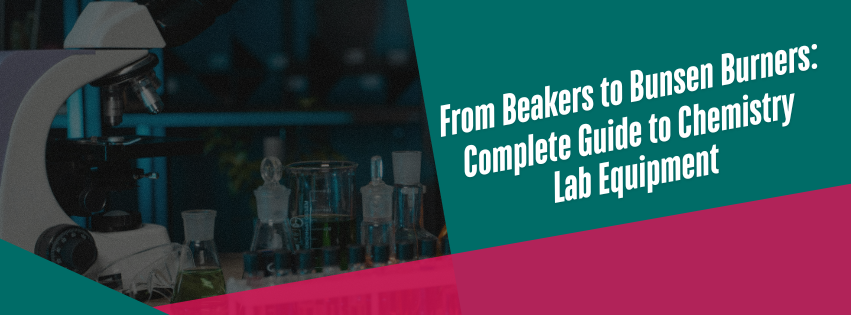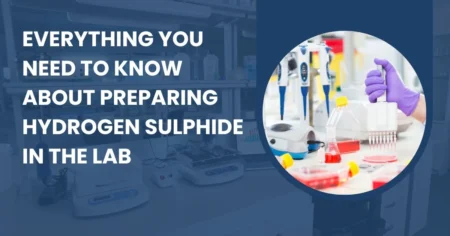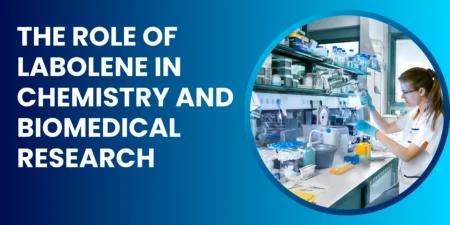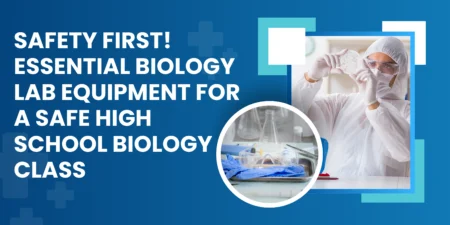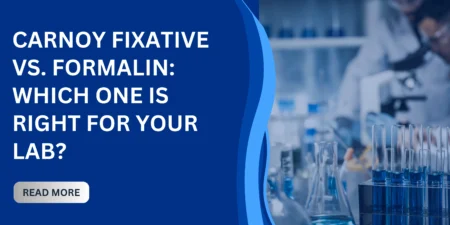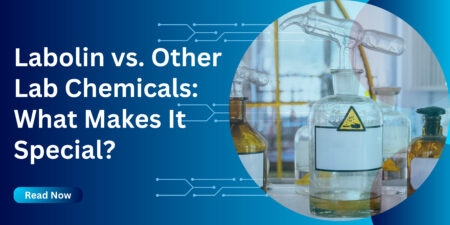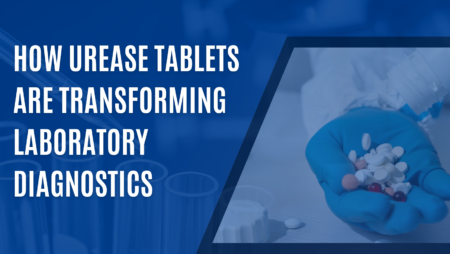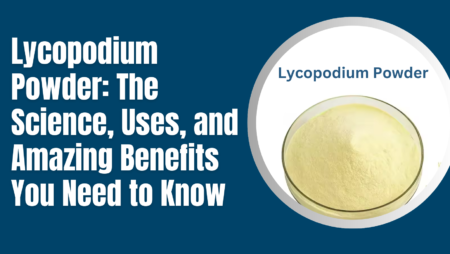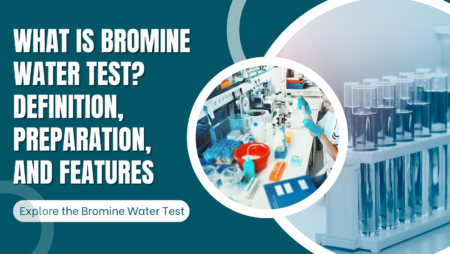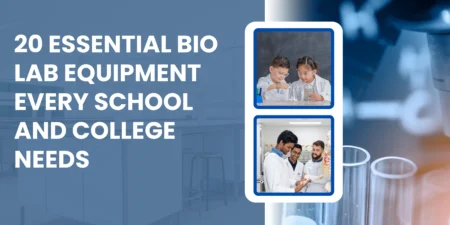From Beakers to Bunsen Burners: A Complete Guide to Chemistry Lab Equipment
Introduction
Chemistry labs are filled with fascinating equipment, each serving a specific function in scientific experiments. Whether you’re a student, researcher, or chemistry enthusiast, knowing how to use these tools is crucial for safe and accurate experimentation. In this comprehensive guide, we will explore the essential chemistry lab equipment, its functions, maintenance tips, and important safety measures to help you confidently navigate the lab.
1. Beakers: The Workhorse of the Lab
Beakers are among the most common laboratory tools. They are cylindrical glass or plastic containers with flat bottoms, used for mixing, heating, and holding liquids.
Key Features:
- Available in various sizes, typically ranging from 50 mL to 5000 mL
- Graduated markings for approximate measurements
- Heat-resistant glass varieties for high-temperature applications
Common Uses:
- Mixing and stirring solutions
- Heating liquids over Bunsen burners or hot plates
- Holding reagents for experiments
Maintenance Tips:
- Clean immediately after use with distilled water and a gentle detergent to prevent residue buildup.
- Avoid sudden temperature changes to prevent the cracking of glass beakers.
- Store upright in a dry place to prevent contamination and damage.
2. Test Tubes: The Miniature Reaction Chambers
Test tubes are small cylindrical glass tubes used for handling small amounts of substances during experiments.
Key Features:
- Typically 10-20 cm long with a rounded bottom
- Made of borosilicate glass for heat and chemical resistance
- Can be sealed with rubber stoppers for storage
Common Uses:
- Conducting small-scale chemical reactions
- Heating substances over a flame or hot plate
- Storing samples for analysis
Maintenance Tips:
- Rinse immediately with distilled water after use to prevent contamination.
- Use test tube racks for drying and storage to avoid breakage.
- Inspect for cracks or chips before reuse to ensure safety.
3. Bunsen Burners: The Heat Source of the Lab
The Bunsen burner is an essential tool for heating substances and conducting flame tests.
Key Features:
- Uses gas (methane or propane) for combustion
- Produces a controlled, adjustable flame
- Includes an air control vent to adjust the flame intensity
Common Uses:
- Sterilizing lab instruments
- Heating chemicals for reactions
- Performing flame tests to identify metal ions
Maintenance Tips:
- Check the gas hose regularly for cracks or leaks.
- Clean the burner nozzle to prevent clogging and uneven flames.
- Ensure proper ventilation when in use to prevent gas buildup.
4. Pipettes: Precision Liquid Transfer Tools
Pipettes are used for accurate and precise liquid measurement and transfer.
Types of Pipettes:
- Graduated Pipettes: Used for general liquid transfer
- Micropipettes: Used for precise, small-volume measurements
- Volumetric Pipettes: Designed for exact volume transfers
Common Uses:
- Measuring liquids for titrations
- Transferring solutions in analytical chemistry
- Dispensing small, controlled amounts of reagents
Maintenance Tips:
- Rinse with distilled water after each use to prevent cross-contamination.
- Store in an upright position to avoid damage to precision tips.
- Calibrate regularly to maintain accuracy.
5. Flasks: Essential for Mixing and Heating
Flasks are used for a variety of purposes, from mixing solutions to heating chemicals.
Types of Flasks:
- Erlenmeyer Flask: Cone-shaped with a narrow neck to minimize spills
- Volumetric Flask: Precisely calibrated for measuring exact liquid volumes
- Round-Bottom Flask: Used in distillation and heating applications
Common Uses:
- Holding reaction mixtures
- Preparing solutions of precise concentrations
- Heating substances over a Bunsen burner or hot plate
Maintenance Tips:
- Wash thoroughly with detergent to remove chemical residues.
- Handle with care to avoid breaking narrow necks.
- Store in an organized manner to prevent accidental falls.
6. Graduated Cylinders: Accurate Volume Measurements
A graduated cylinder is used to measure liquid volumes with greater accuracy than beakers.
Common Uses:
- Measuring precise liquid volumes
- Preparing dilutions for experiments
Maintenance Tips:
- Use a brush for thorough cleaning to remove liquid residues.
- Ensure it is placed on a flat surface for accurate measurements.
- Dry completely before storage to avoid contamination.
7. Mortar and Pestle: Grinding and Mixing Solids
The mortar and pestle set is used to grind and mix solid chemicals into powders.
Common Uses:
- Crushing solid substances for dissolution
- Preparing fine powders for reactions
Maintenance Tips:
- Wash immediately after use to prevent residue from sticking.
- Use a soft brush to clean hard-to-remove particles.
- Store in a dry place to avoid moisture absorption.
8. Centrifuge: Separating Substances by Density
A centrifuge is used to separate components of a mixture based on density and mass.
Maintenance Tips:
- Balance the load properly to prevent damage.
- Clean rotors and chambers regularly.
- Avoid overloading to ensure longevity.
9. Lab Balance: Precision Weighing Instrument
Lab balances are used to measure the mass of chemicals with high accuracy.
Maintenance Tips:
- Keep the balance calibrated for accurate readings.
- Clean weighing pans regularly to prevent contamination.
- Store in a stable, vibration-free environment.
10. Safety Equipment: Essential Protection in the Lab
Maintenance Tips:
- Inspect safety gear regularly for wear and tear.
- Replace damaged gloves, goggles, and lab coats immediately.
- Ensure fume hoods and eye wash stations are functional.
Conclusion
A well-equipped chemistry lab is essential for conducting safe and accurate experiments. From beakers and flasks to Bunsen burners and centrifuges, each piece of equipment serves a vital role in scientific research. By understanding how to use and maintain these tools properly and following safety guidelines, you can enhance your laboratory experience while minimizing risks. Whether you’re a beginner or an experienced scientist, mastering lab equipment is a key step in advancing your chemistry skills.
If you’re looking for high-quality chemistry lab equipment for your institution, we’ve got you covered! Get in touch with us today to find the best lab supplies for your needs.
Stay connected and follow us on social media for updates, offers, and more! Facebook, Instagram, WhatsApp

